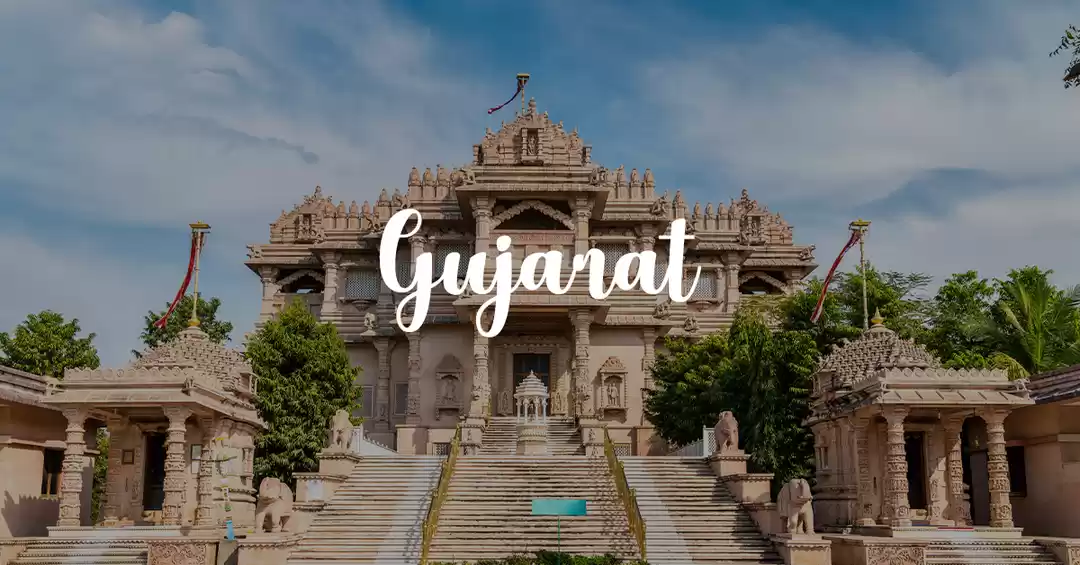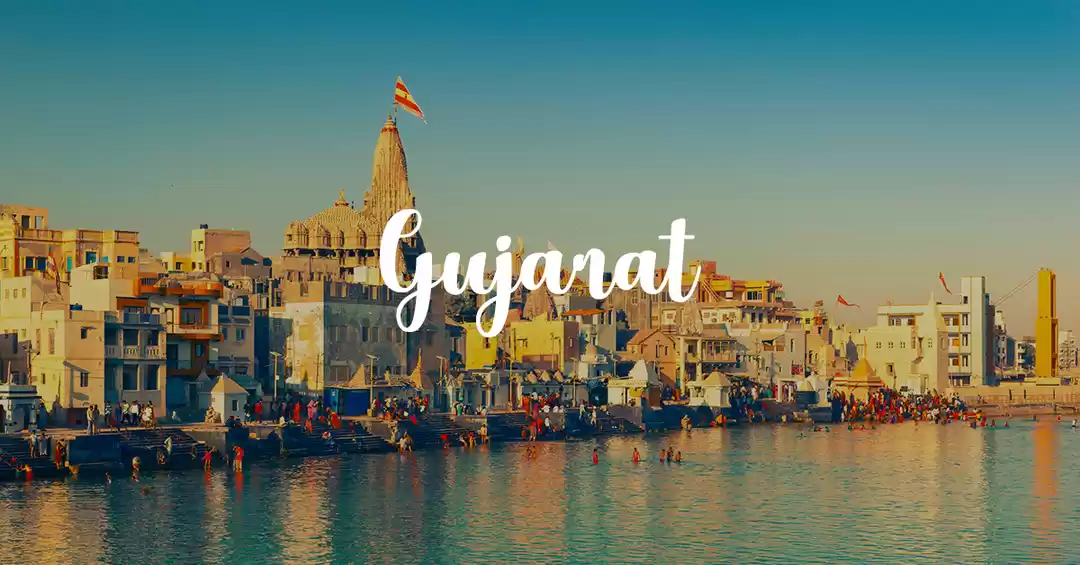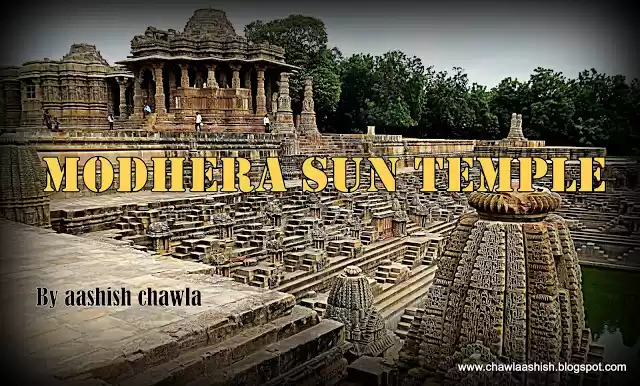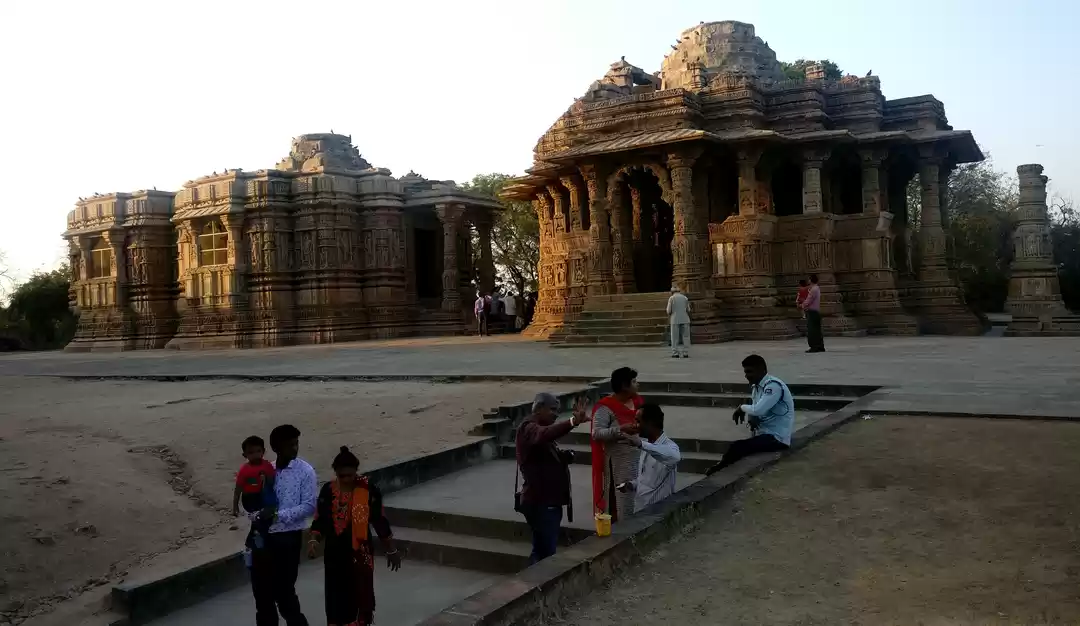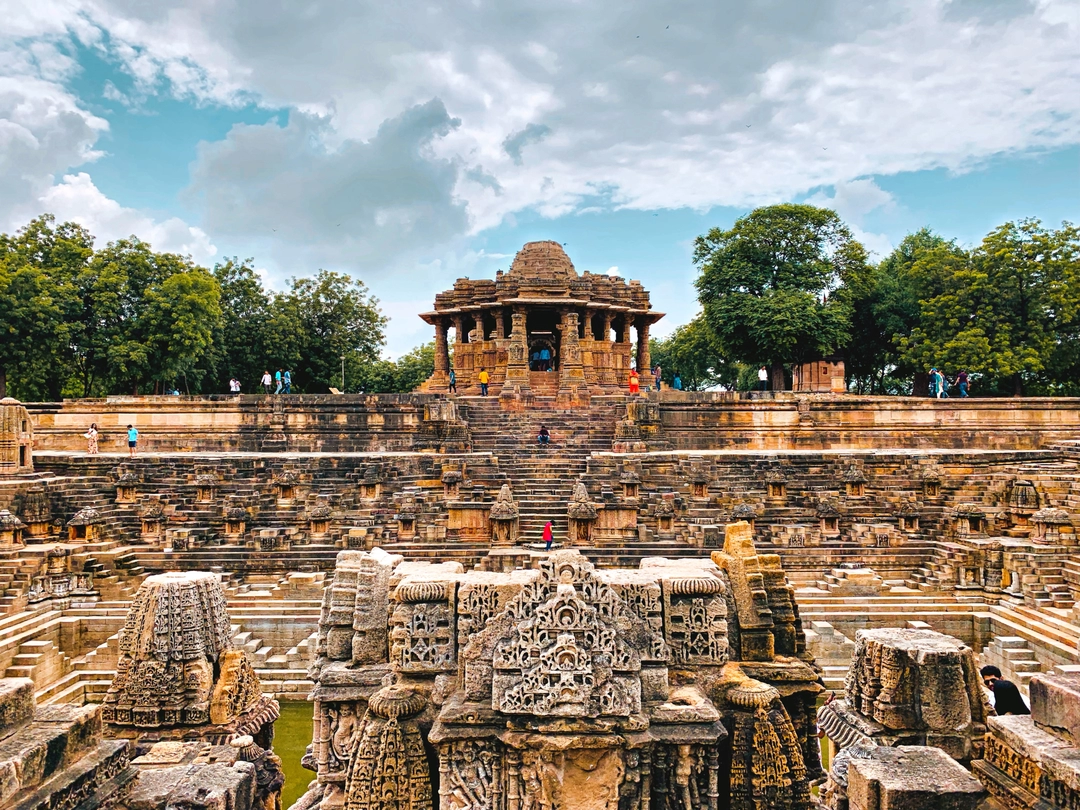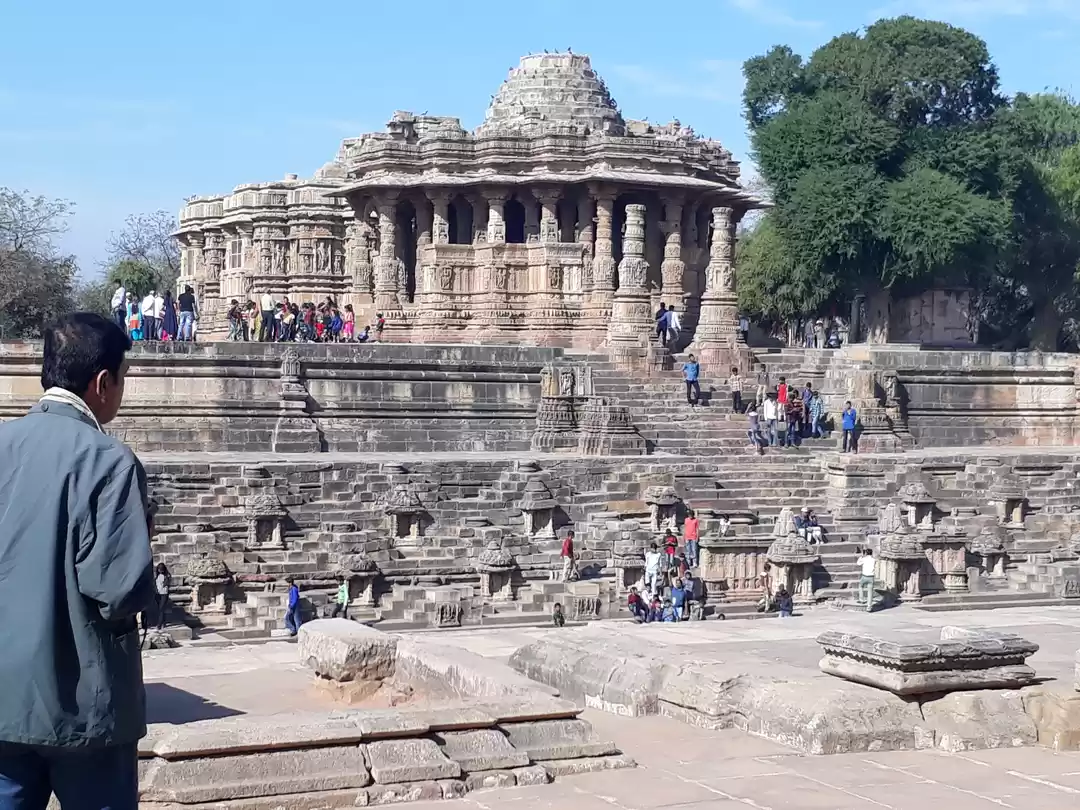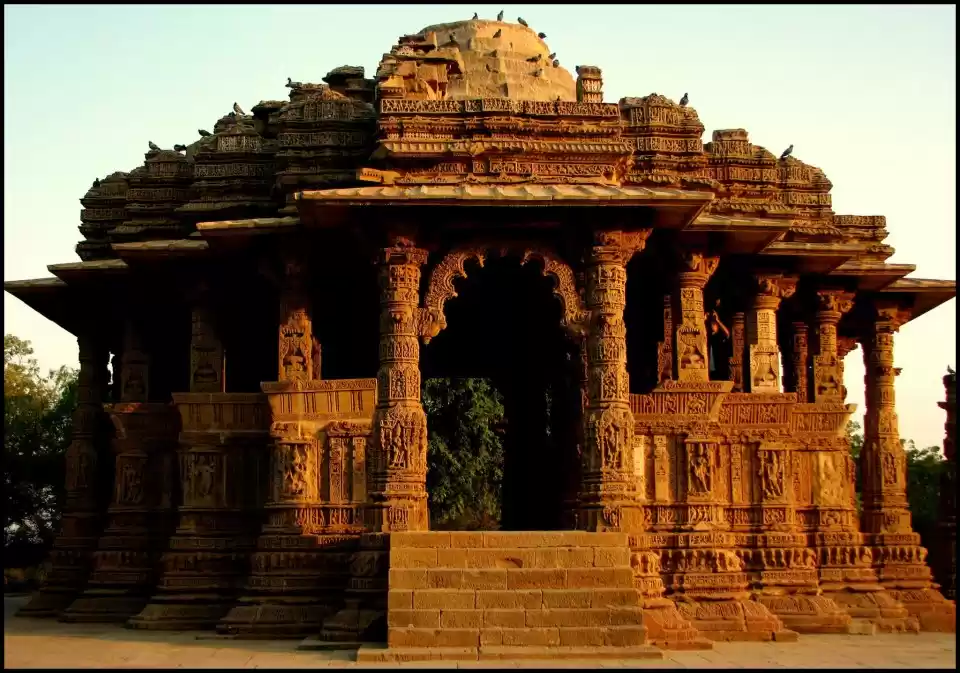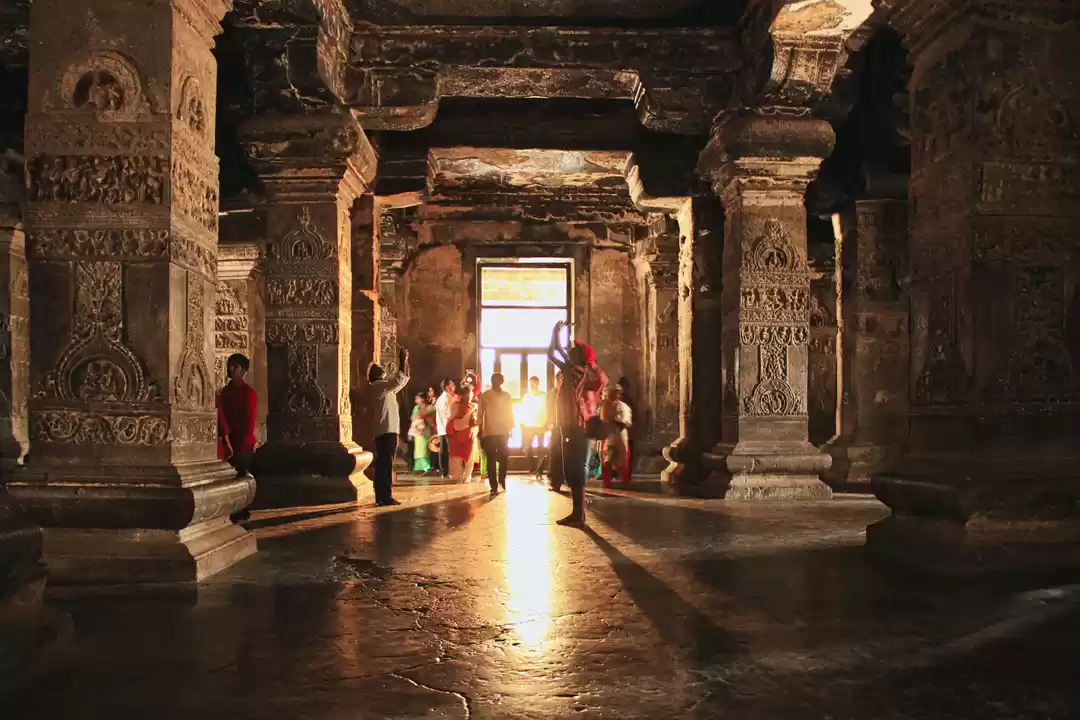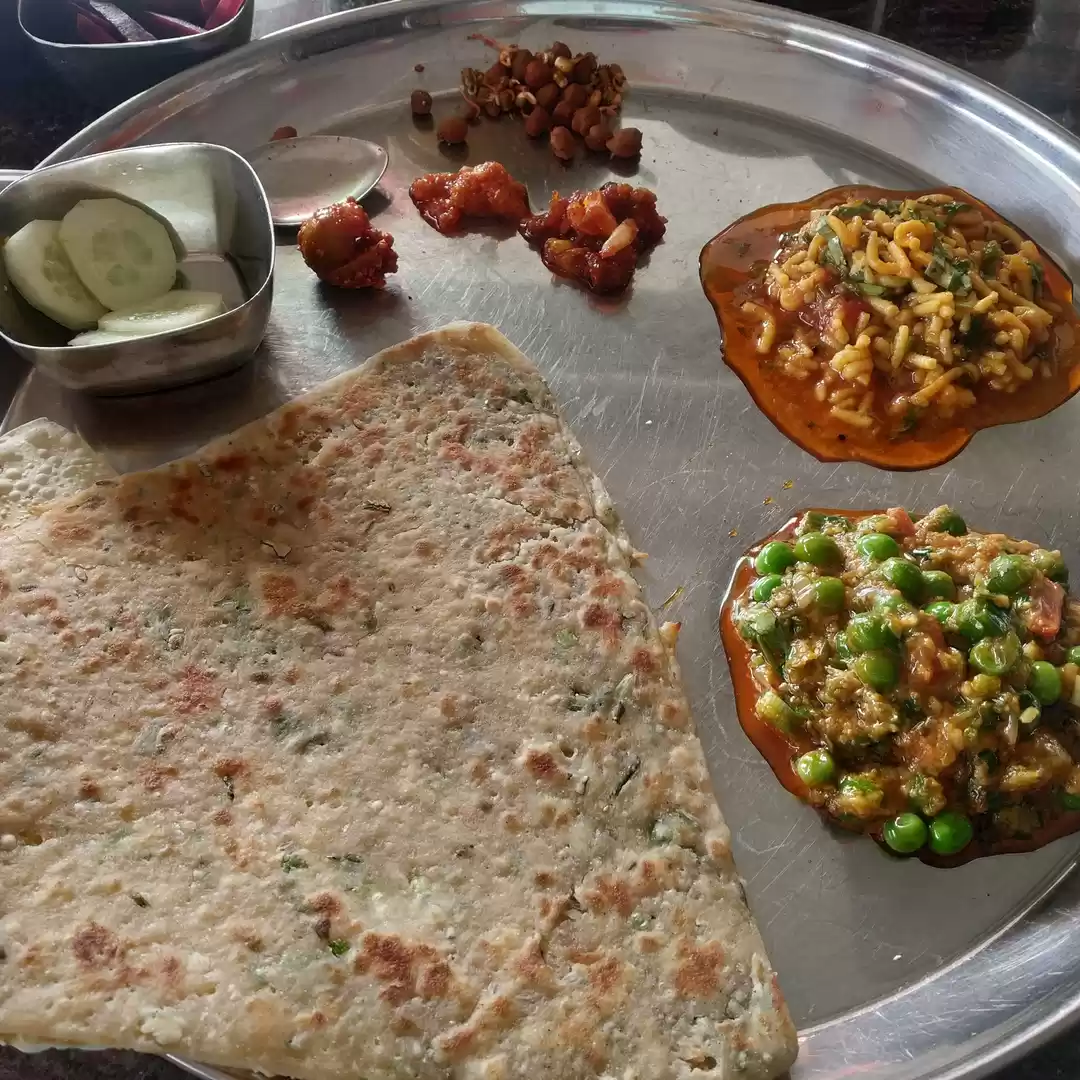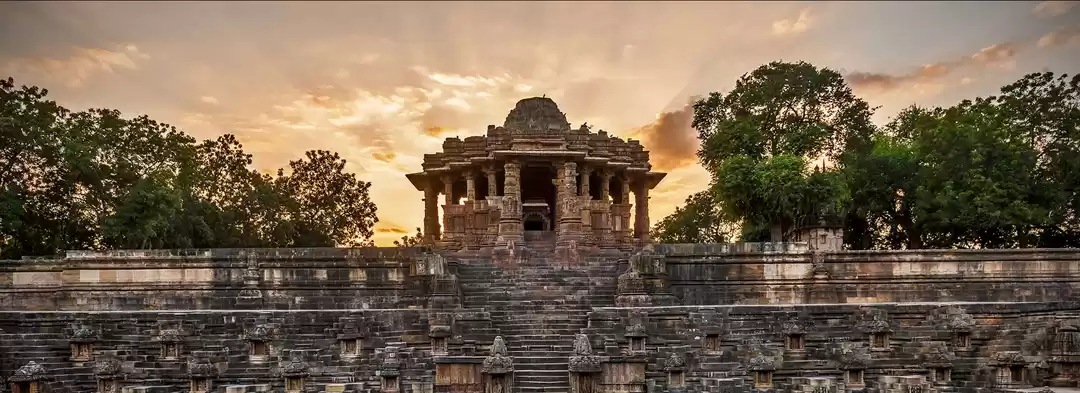
For centuries, Sun has been worshiped as a major deity in India. Everything that is life sustaining on this planet was considered as god or different manifestations of god in India. As per Veda’s, the sun is considered as the praan or soul of the universe which illuminates the mind of the worshipers and lead them to the path of self realization. Sun is the visible god as per Hinduism and it is the source of energy which sustains all the life forms on the earth. People offering prayers to the sun is showing their gratitude to the sun for all that it has bestowed on this planet.

The Modhera Sun Temple was made by King Bhima I of the Chalukya dynasty in the early 11th century at the banks of Pushpavati river. As per some historians the Sun Temple might have been built to commemorate the victory of king Bhima over Mahmud of Ghazni whose advancing soldiers were stopped at Modhera. This place, Modhera, is also mentioned in Ramayana as Dharamaranya – or the forest of the Dharma. It is believed that Lord Rama arrived here on Sage Vashistha’s advice to wash off his sins for committing Brahma hatya as he had killed Ravana. Rama performed his Yagna here and established a village called Sitapur which is now known as Modhera.
Since we have already been there a few times this trip was solely for our kids to get them acquainted with our cultural heritage and glorious past. We wear staying in Ahmedabad for few days with our relatives and decided to visit Sun temple and Rani ki Vav as a day trip from Ahmedabad which is easily doable. For this trip we hired a car from Ahmedabad for full day. One-way trip from Ahmedabad to Modhera takes around 2 hours.
We reached there around 11 AM and parked our taxi outside in the paid parking area. There is ample of parking space outside the Temple. There is a Toran restaurant just before the entrance of the Temple premises which is the only good restaurant around the place. After purchasing the ticket from the ticket booth, we entered the temple premises. The temple complex is spread on a big area with a lot of green cover around. If you are looking for a guide, they are available inside the temple premises. You can find one of them near the temple entrance and they charge approximately Rs 300.

The temple complex has three main parts; the water tank (Ramakunda), a detached assembly hall (Sabha Mandap) locally known as Sita Chavadi and the main temple with a Garbha griha and a mandap called Guda Mandap. Just behind the temple, the river Pushpavati flows. No mortar or cement was used to join the stone bricks, instead they were interlocked together to create a structure resistant to earthquakes.
Surya Kund
The Surya Kund or the Rama kund is the temple tank with four levels of stairs in a perfect fractal geometric pattern which will take you down to the water level. In India, all big Temples have a temple tank but what makes this tank distinct from others, is the presence of big and small miniature temples carved on its steps. It is said that originally there were 108 shrines on these steps but most of them are worn out with time. Few shrines with idols of Hindu God and goddess are still intact. The original 108 shrines are available but whatever is remaining is simply beautiful. Devotees use this water tank to purify themselves before the prayer and to give aargh (salutation to sun with water).

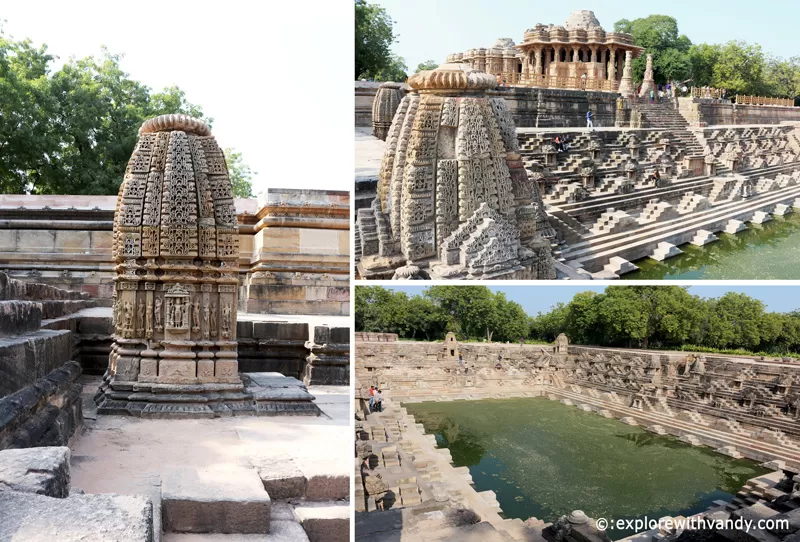
After the Surya kund / Rama kund you will see a flight of stairs going up through two large pillars. These pillars are known as “kirti Toran” which were the archway entrance gate of the temple before, but now the arch is missing.

Sabha Mandap
After passing through Kirti Toran, you will enter in the Sabha Mandap. It is octagonal in shape structure on a high plinth and open from all sides. All four sides have an entrance arched gate with a few stairs. The roof is supported by 52 beautifully carved pillars that represent 52 weeks of the year. The pillars are intricately carved with the stories of Ramayana and the Mahabharata. The ceiling is also very attractive and carved with floral motifs. This is the most opulent structure in the temple complex, intricately carved from inside and outside. The Sabha mandap is a visual delight and mind-blowing.



Garbha Gruha
After crossing the Sabha Mandap, you will enter in the main Temple known as Guda Mandap or Garbh Gruh which was once house idol of Lord Sun. It is constructed on a plinth that is shaped like an inverted lotus. Lotus is not only a sacred flower in Hinduism but deeply associated with the sun, because it bloom in the morning and close at night. Once you enter inside the main temple you can see the Garbhagrha (sanctum sanctorum) with a hall or mandap in front. The Gudh Mandap is supported on 8 decorated columns in the center that makes octagon representing 8 directions. Inner walls of hall has carved figures of twelve faces of Aditya, which represents 12 months of the year. Between the outer walls of the sanctum sanctorum and that of the temple is the pradakshina marga (circumambulatory passage). The sanctum sanctorum, once housed the magnificent idol of the Surya (sun), is now a dark place with mesh screen and locked. As per legends the idol of the Sun God was made of Gold with a precious stone / diamond on the forehead. The guda mandap design and idol is placed in such a way that on solar equinoxes i.e. on March 21 and September 23, the first rays of the rising sun fall directly on the idol forehead and the whole temple was illuminated with the reflection of light from the precious stone studded on the idol. Not only the idol and the chariot were of gold, but the idol sat on a chamber which was filled with gold coins and precious gems. Due to this treasure, Allauddin Khilji attacked the Solanki rulers of Gujrat and plundered the Sun temple. It is believed that the idol, made of Gold, was taken away by him. Many of the idols of Gods and Goddesses of the temple are also defaced by invaders. Since then, prayers are not offered in the temple and now all remaining is a deep pit in the Garbhagriha locked by ASI.


The walls of the sanctum are relatively plain when compared to the rest of the temple. After visiting the main Temple, it’s time to explore the temple from outside. The outer walls of the temple are highly decorated with intricate stone carvings. The main sun temple is on a plinth that is designed like an inverted lotus. The first most visible thing above the inverted lotus plinth is the panel carved with Elephants called Gaj Patika (Elephant strip). There are total 365 Elephants carvings around the temple which represents 365 days in a year. Circumventing the main temple, there are 12 sculptures of the Sun God representing the 12 months of the year and different aspects of Sun for each month along with 12 sculptures of Goddess known as “Dwadash Gauri” and the sculpture of deities of the 8 directions known as “Dikpal” in 8 directions of the temple.

But other than these big sculptures, the temple wall is full of small sculptures which are very interesting. If you look closely you can see sculptures showing various stages of human life right from the intercourse and child birth to death. Everyday life of people, their celebrations and other details are beautifully carved on the stone panels.

The roof of the main temple is flat. The shikhar of the temple was broken by invaders and no longer exists. Right side of the temple there are two more carved towers which look like the kirti toran and their arch is also missing. The exact purpose of this arch gate is not known. The Temple is constructed in a perfect geometry so we can assume that there should be another arch gate on the other side of the temple, which is missing now.

The important feature worth mentioning about the temple is the temple’s location. It is located on the Tropic of Cancer line. Even though the line of cancer is moving every year, but this place is between the minimum and maximum range. Being on the line of cancer, during the summer solstice the sun shines directly on top of the temple, casting no shadow.
It has withstood the test of time and many attacks, still it stands tall and bears testament to our rich and glorious past. The Modhera Sun Temple architecture is stunning and a sight to behold. Many of the sculptures are defaced by the invaders, but still the temple with its remaining carvings and sculptures is worth visiting.
Best Time to Visit
Summers are hot and humid in Western India. Therefore, it is always advisable to plan your travel in these regions around winter months, between October to March. During this time the weather is pleasant and more enjoyable. If you are visiting this place during summer time, still don’t worry, there are a lot of trees and greenery around the temple complex to cool down and relax. You can also plan your trip around Modhera Dance Festival. Gujarat Tourism Corporation hosts the Modhera Dance Festival every year for three days in the 3rd week of January after the kite festival of “Uttarayan”. This unique dance festival showcases Indian classical forms of dance and music from various regions of India along with various acts. The program is usually scheduled at night and celebrated against the gorgeous setting of the Sun Temple beautifully lit in the background.
How to get to Modhera Sun Temple
The nearest airport is that of Ahmedabad. So, you will have to fly into Ahmedabad first and then take a bus/train/taxi from there.
The most preferred travel option is by road. You can hire a private taxi from Ahmedabad. We booked a private taxi for full day and visited Modhera and Patan on the same day. The journey takes about 2 hours one-way. if you are traveling by your own car, there is plenty of parking space outside the temple premises.
State transport buses run frequently between Ahmedabad and Modhera and are less expensive than taxis. Check GSRTC website to book your bus tickets.
You can also take a train to Mehsana, which is the closest railway station on the main line around 25 km away. Then you can board a taxi or a bus to get to the temple.
Modhera Sun Temple tickets and timings
Modhera Sun Temple ticket purchased on site is ₹ 25 for Indian citizens and ₹ 300 for foreigner. Tickets purchased online with particular date and time, the entrance fee is ₹ 20 for Indian citizens and ₹ 250 for foreigner. You can purchase online ticket at https://asi.payumoney.com (select Vadodara city for Modhera sun temple). There is no additional fee for Photography inside the Temple premises. The temple is open every day between 7 AM to 6 PM.
There is also a museum in the premises that is maintained by Archaeological Survey of India. The museum is open between 10 AM to 5 PM every day except for Fridays and public holidays. There is no additional charge for visiting the museum. Washrooms are located next to the museum.





